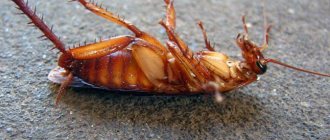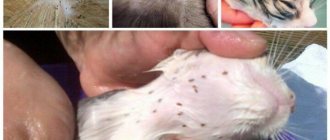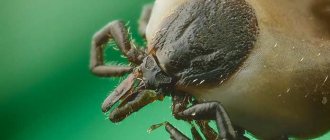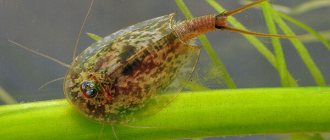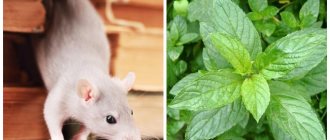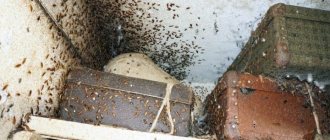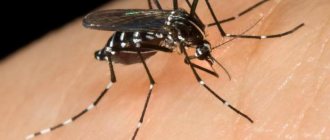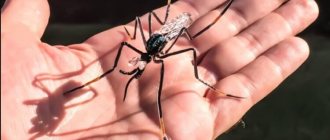№11
The average lifespan of mosquitoes is less than 60 days. After mating, the male usually lives only about 3 days (sometimes 5). But the female can live for a month, or even more.
However, the lifespan of this insect can increase significantly if it hibernates. Unlike people, mosquitoes are cold-blooded creatures and their body temperature is regulated by the temperature of their environment. So when it gets too cold, some mosquitoes may hibernate.
How far do mosquitoes fly?
Most mosquitoes come from aquatic habitats and do not travel very far from their home. Most mosquitoes can travel only 3-4 kilometers. Therefore, “your” mosquitoes are mainly a problem for you and your neighbors. Some species, such as the Asian tiger mosquito, can fly even shorter - only about 90 meters.
But salt marsh mosquitoes (sollicitans) can live 160 kilometers from us, as they like to fly long distances in search of a suitable place to live (where there is enough nectar and blood that they would like to drink).
Most mosquitoes can travel only 3-4 kilometers
№12
They are attracted to pregnant women and men who drank beer. Studies have shown that between a sober person and someone who drank beer, the mosquito will give preference to the one who drank beer. They are also more attracted to pregnant women. There is no secret to this. Pregnant women emit more CO2, and these insects look for their prey precisely by starting from the source of CO2. When it comes to beer, scientists still don't really understand why people prefer it when they're drunk. Most likely due to increased body temperature and increased sweating, which also attracts mosquitoes.
Why do mosquitoes still exist?
Mosquitoes populated the planet long before humans. The oldest mosquito fossils date back to the Cretaceous period, about 200 million years ago. There are more than 3,500 species of mosquitoes around the world, but only about 200 bite humans. Essentially, mosquitoes still exist because they are almost impossible to kill without consequences.
Not a single species of living being on Earth exists in isolation. As long as mosquitoes can find food and are not under too much environmental pressure, they will continue to exist. In an ecosystem, they serve as food for other species (birds, frogs, fish, etc.), as well as pollinators. The larvae eat detritus in the water, helping to clean the water.
Interesting facts about mosquitoes
These are the strangest females created by nature. They don't ruin the life of males, they ruin it for us. Mosquitoes (or mosquitoes) belong to the order Diptera (relatives of flies, "Mosquito" means "little fly" in Spanish); suborder Nematocera ("with thin antennae"), family Culicidae.
1. Mosquitoes appeared in the Jurassic era, more than 175 million years ago, so even dinosaurs inherited them.
2. There are more than 3,000 species of mosquitoes, found in both the Arctic tundra and tropical rainforests. At the same time, all types of mosquitoes become active at a temperature of 12.7 degrees Celsius, so their highest concentration is, of course, in warm and humid forests, swamps, and dry deserts.
3. Peak activity of mosquitoes occurs at dusk and night; during the day they rest, hiding in houses and plants. During the day, mosquitoes are food for other species of animals.
4. Mosquitoes come in different sizes, up to 12.5 mm. Fossil mosquitoes reached 5 centimeters in length!
5. Mosquitoes do not bite, but suck. 1,200,000 mosquitoes are enough to drain all the blood from a person. These are, of course, theoretical calculations, because before that a person will die from irritation and painful shock.
6. An experiment in the Canadian tundra showed that people with bare arms, legs and torso received 9,000 bites from young mosquitoes per minute. At this rate, a person can lose half their blood in two hours.
7. Only female mosquitoes bite. They bite both humans and other vertebrates, from elephants to mice and turtles, sucking their blood. Such food is necessary for females to bear offspring. Some species of mosquitoes can give birth without previously sucking blood, but at the first opportunity they do not refuse it (Culex species). One drop of blood gives life to thousands of mosquito eggs. The most “tasty” blood for mosquitoes is found in people with the first and second blood groups, as well as children.
8. Male mosquitoes do not suck blood - they feed on plant foods and nectar.
9. A mosquito sting looks simple, but under high magnification it turns into a complex structure. It consists of six parts - two tubes, salivary and nutritious, surrounded by two sharp lower jaws and two “scalpels” with saw-toothed teeth. All 6 parts are enclosed in a protective shell along the entire length. When bitten, the sting plunges several millimeters into the skin until it reaches a small blood vessel.
10. Mosquitoes have olfactory and heat-sensitive organs located on a pair of antennae, and three pairs of legs that guide them towards prey, which reveals itself through increased concentrations of carbon dioxide, heat and sweat.
11. The eyes occupy most of the mosquito's head. They see in infrared light, which makes it possible to freely find warm-blooded prey in complete darkness.
12. Male mosquitoes have developed hearing organs, which contain the same number of sensitive cells as in the human ear. This helps them find and pursue females. When a mosquito “hears” a member of the opposite sex, it adjusts its squeak to match its frequency. Males “synchronize” with females within a second or two. Females require several times more time for this.
13. Mosquitoes can smell their food from up to 50 meters away. They can travel up to 64 kilometers at a time in search of food.
14. In order to find you, mosquitoes use the carbon dioxide that you exhale. People with high concentrations of steroids or cholesterol on the surface of their skin are more likely to attract mosquitoes, and nothing can be done about it. Mosquitoes are also attracted to uric acid in sweat and movement. Exercising in an area where mosquitoes are located is a bad idea because the increased production of carbon dioxide and sweat will turn you into a delicacy for the surrounding mosquitoes.
15. Blood clots quickly, so the mosquito delivers an anticoagulant through the salivary tube, which prevents blood clotting. Mosquito saliva also has analgesic properties. After the mosquito flies away (or you swat it), the saliva remains under the skin, causing severe irritation and itching.
16. Do not scratch the bitten area, it is better to moisten it with alcohol - this will quickly relieve the pain.
17. The biggest danger from mosquitoes is not the bite itself, but the parasites that are carried on the mosquito sting and can enter the bloodstream. This is especially pronounced in the tropics, where malaria mosquitoes are found, carrying an infection that kills up to three million people a year. Aedes mosquitoes are carriers of yellow fever, hepatitis and encephalitis. The dengue virus is also transmitted by mosquitoes. In reality, mosquitoes are insects that kill the largest number of people per year, but they do not carry AIDS, because this virus dies in the digestive system of the mosquito.
18. Mosquitoes can fly between raindrops at speeds of up to 2.5 km/h for 5 minutes, flapping their wings at a frequency of 250 beats per second! This frequency determines the sound we hear, which helps us detect the insect before it bites. Mosquitoes can perform various aerobatics, such as flips, dives, emergency landings and others. Unlike other insects, mosquitoes have only one pair of wings (not two), the second has evolved into organs that determine acceleration and altitude.
19. On the surface, mosquitoes move almost imperceptibly - the victim does not feel anything. A mosquito can even walk across a web without disturbing the spider!
20. Mosquitoes can walk on water. Apart from them, only some aquatic beetles can do this.
21. Mosquito larvae grow in water. They live in trash cans, drainage pipes, barrels, washbasins, wet basements, kitchens and balconies. Fighting the mosquito population can turn into an insurmountable task if this fact is not taken into account. In addition, for the larvae it does not matter how clean the water around them is, because they breathe oxygen from the air.
22. Mosquito eggs are resistant to cold and drought. They can lie on dry, cold soil for several years, and after one warm rain within a week the larvae will hatch.
23. In the family Nematocera, in addition to mosquitoes, there are other insects similar to mosquitoes. They live near water and are absolutely harmless, as they feed on plant sap. These are, for example, insects of the species Chironomidae, Tipulidae (long-legged). At the same time, there are insects that are not like mosquitoes, such as Simuliidae (black fly), Ceratopogonidae (tsetse fly) that bite and drink human blood, carrying dangerous types of infections such as sleeping sickness and others.
24. The largest mosquito monument is located in the town of Komarno, Canada. The steel statue was made in 1984 and has a wingspan of 5 meters.
25. In 1998, scientists discovered a new species of mosquitoes in the London Underground, which got there during its construction 100 years ago. These mosquitoes are a nuisance to rats, mice and humans and do not interbreed with their land-based relatives. The DNA of these mosquitoes changes depending on the subway line where they are found.
26. In Central America there is the so-called Mosquito Coast (a thin strip of land along the Caribbean in Honduras and Nicaragua). This coast is named so not because of mosquitoes, as you might think, but in honor of the native Miskito population.
27. The world's largest mosquito net was woven in Abuja, Nigeria, as part of a campaign against malaria. 200 children fit under it.
28. The best mosquito repellent is DEET (N, N-diethyl-meta-toluamide), which is included in most modern mosquito repellent chemicals (“OFF” and others). In addition, you can use eucalyptus oil, soybean oil, cedarwood, peppermint, lemongrass and geranium. There are also mosquito traps. They emit carbon dioxide, heat and moist air, attracting insects and holding them with sticky substances. By placing such a trap in a place where mosquitoes accumulate, you can significantly reduce their number.
29. One Polish radio station reported that listening to its broadcasts repels mosquitoes. Radio Zet continuously transmits a high-frequency signal that simulates a bat locator, which repels these insects. I just doubt that this helps, because if the signal is audible to a person, then it interferes, and if it is ultrasonic, then most likely the radio speaker cannot reproduce it. This is more of a gimmick than a real effect.
30. Some plants with a pungent odor repel mosquitoes, for example, garlic.
31. At the moment, the most effective and at the same time affordable way to protect your room from mosquitoes is a mosquito net!
Varieties of blood-sucking insects
In total, there are more than three thousand species of insects on Earth. Up to a hundred of their species have taken root on the territory of Russia. The most common are:
- The common mosquito is a ubiquitous species that tends to annoy both animals and people; the insect's body size reaches 8 mm, and is a carrier of meningitis, eczema,
Centipede mosquito
- dolopoda - lives near water bodies, in swampy places, is a threat to agricultural plantings, because this insect feeds only on plants,
- Anopheles is a mosquito that is dangerous to humans because it infects people with malaria through its bites; it lives near bodies of water and is practically no different in appearance from the ordinary species,
- two-striped - inhabitant of forests and swamps, carrier of dangerous diseases,
- winter mosquitoes - found near water bodies, body length reaches two centimeters, living conditions differ from other species, survive in winter by living in rotten wood.
Folk remedies for mosquitoes: advice from mothers
- “Star”. It is only used on stroller canopies and clothes; it is not applied to the skin of children under three years of age.
— Mix vanillin powder with sunflower oil or baby cream. Suitable for clothing and skin. Disadvantage: stickiness.
— Clove, citronella or eucalyptus oil. Also on clothes, stroller, napkin.
- Mix 50 ml of vegetable oil, 30 drops of tea tree oil and 5 drops of clove oil. Pour the mixture into a dark glass bottle and shake vigorously. This natural repellent can also be used on very sensitive skin.
— “Carnation” cologne is mixed with water approximately 50/50 and poured into an aerosol package.
In hot weather, essential oils must be diluted with cream or vegetable oil. Otherwise, you risk getting a sunburn in the greased area.
Why do they bite
Blood feeding is a necessary measure for the continuation of the mosquito species. Hundreds of insects emerge from one clutch. Each female lays eggs every 2-3 days.
A person's blood type also matters for mosquitoes. Preference is given to representatives of the first blood group, with the third group in second place. This is due to the higher protein content in the blood of these people. To produce offspring, protein is a necessary element.
Increased metabolism and the lactic acid released also attracts mosquitoes. People who sweat a lot, pregnant women and children are at risk. Blondes are also bitten more often than brunettes. A person who has drunk any amount of alcohol has a higher body temperature and sweats more - this is another potential victim for the mosquito.
Mosquitoes will not bite if the air temperature drops below 12 degrees. Also at a temperature of 30 degrees they show less activity. The best conditions for their comfortable existence are a temperature of 15 to 20 degrees and a humidity of about 90%.
Pedagogical mini-project “Mosquitoes” for preschool children
Yulia Belonosova
Pedagogical mini-project “Mosquitoes” for preschool children
Mini project. Topic: “ Mosquitoes ”
.
I. Project type.
According to the dominant activity in the project: educational, creative, gaming.
Content: pedagogical .
Project participants: children of senior preschool age .
By duration: short-term.
By the nature of contacts: within Kindergarten No. 25,
Kamensk - Uralsky.
II. Relevance.
Preschool age is an important stage in the development of an individual’s ecological culture. At this age , the child begins to distinguish himself from the environment, develops an emotional and value-based attitude towards the environment, and the foundations of the moral and ecological positions of the individual are formed. Traditionally, in preschool education, the general process of mastering nature also includes the element of its knowledge, the development of a humane attitude towards it and conscious behavior in the natural environment. The ecological and social situation of today confronts preschool education specialists with the task of finding universal means of environmental education in modern conditions.
III. Objective of the project. Give children an idea about mosquitoes and their appearance.
IV. Objectives of project activities.
1. Give children an idea about mosquitoes and their appearance.
2. Teach children to name and distinguish mosquitoes by appearance .
3. To form in children a positive experience of interaction with the outside world.
V. Expected result.
1. Children have an idea about mosquitoes and their appearance.
2. Children can name and distinguish mosquitoes by appearance .
3. Children have a positive experience of interacting with the world around them.
VI. Product of project activity.
— exhibition of drawings on the theme “ Mosquitoes ”
.
VII. Project implementation stages:
I. Preparatory stage.
1. Selection of methodological literature.
Objective: methodological and information support for the project.
2. Selection of fiction, visual and didactic material.
Task: planning upcoming work on a mini-project .
3. Preliminary work with parents (legal representatives)
.
Task: to familiarize parents (legal representatives)
with
a mini-project .
II. Main stage.
1. Examination of illustrations about mosquitoes . Objectives: to give children an idea about mosquitoes and their appearance. Teach children to name and distinguish mosquitoes and their appearance. Generate interest in observing mosquitoes .
2.Reading fiction:
- fairy tale by D. Mamin - Siberian “The Tale about Komar Komarovich - Long Nose and about Hairy Misha - Short Tail”;
— Tais Gubarev’s poem “ Mosquito ”
;
— poem by A. Barto “ Mosquitoes ”
;
— poem by Alexander Akimtsev “ Mosquitoes ”
;
— poem by Lyudmila Gromova “ Mosquito ”
;
— poem by I. Lebedev “ Mosquitoes ”
;
- telling riddles about mosquitoes .
Objectives: to activate and enrich children's . Exercise children in transforming words by analogy.
3. Conversation “Who are mosquitoes ”
.Goal: to give children an idea about
mosquitoes and their appearance.
4. Conversation “Beware of mosquitoes ”
.Goal: to continue to introduce
children to mosquitoes and their appearance.
5. Listening to music (sounds of mosquitoes )
.Objectives: to develop
auditory perception in children .
6. Outdoor game “Catch a mosquito ”
.Goal: to form and improve
children motor skills and abilities in outdoor play.
7. Conversation “Monuments to the mosquito in different cities of the world”
.Goal: to give children an idea of the motive for erecting
mosquito .
III. The final stage.
1. Drawing “ Mosquitoes ”
.Objectives: to teach
children to reflect their impressions in accessible ways. Strengthen the techniques of painting with a brush, the ability to hold a brush correctly, rinse it in water, and dry it on a cloth. Develop imagination, creativity, speech.
Interesting information
Even the way mosquitoes appear, the way they are born, is already unusual. Since they fly in the air, spend the night in houses and trees, it can be assumed that birth takes place there. However, the female mosquito lays her eggs on the surface of the water. They sink to the bottom and after a while pupae appear, which in principle could live in water. And from the opened cocoon the well-known mosquito appears.
Like all insects, the mosquito has 3 pairs of legs, but the tips have suction cups that allow them to stay firmly on a vertical surface. The mouth is equipped with teeth, lips, jaws and even a tongue. There are as many as 50 teeth, and the mosquito bites through the skin with them.
As for the wings, they are a real musical instrument. The squeak that a mosquito makes is the result of the work of its wings. In other insects the process is similar, but the sound is different. Bees and bumblebees make a buzzing sound. The mosquito's squeak comes from its small wings, but the frequency of its flapping is amazing - 600 times per second.
Mosquito squeaks are the mechanism by which insects communicate. But mosquitoes do not perceive the sound itself, but air vibrations.
Only females feed on blood, regardless of the variety. They don’t care what kind of victim is in front of them - a person or an animal, the main thing is that blood flows in their veins. If the female goes hungry for a period of time, she goes through a period when she does not lay eggs and becomes a vegetarian. Males do not feed on blood; vegetarianism is their lifelong destiny. They, like bees and butterflies, drink nectar from flowers and eat pollen.
There is a type of mosquito that does not eat anything during its life (these are bell-bellied mosquitoes). True, their life expectancy is from three days to one week.
